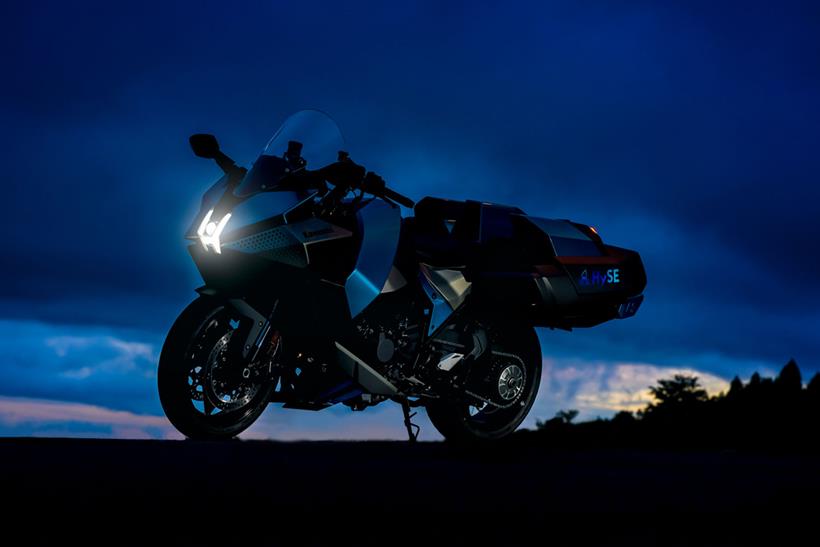Kawasaki have demonstrated the potential of hydrogen propulsion - but is it really the answer?

Kawasaki made history at Suzuka when they demonstrated their hydrogen powered prototype machine in action – it was proof that the bike works, but many still question the viability of H2 as a fuel.
The bike uses an engine based on the 998cc four-cylinder Ninja H2. It’s been adapted to allow direct injection of hydrogen and is housed in a modified chassis from the Ninja H2 SX sports-tourer.
In a video released by Kawasaki, the prototype can be seen filling up at a special hydrogen filling station as well as riding on track. Rollout of any future hydrogen models will rely on the availability of this infrastructure, with the newly elected government already saying they want end of the sale of new combustion cars by 2030 – reversing the 2035 extension.

Kawasaki certainly believe the fuel has potential. “Hydrogen engines produce power like conventional gasoline engines: air is taken in, mixed with fuel, and then combusted,” said Project Leader, Satoaki Ichi. “When hydrogen combusts, water is produced. If you hold your hand near the tailpipe, you can feel it is moist. It is like a humidifier on wheels.”
The engine sounds very similar to what you expect from a petrol machine too, but there is no getting away from the enormous rear bodywork which houses the hydrogen fuel tanks.
A typical 15-litres tank of petrol weighs around 12kg. Hydrogen is nearly three times as energy dense, so you could get a similar amount of power/range from about 4kg, but at atmospheric pressure 4kg of hydrogen would fill 44,000 litres of space. That would be a cube of around 3.5 metres along each edge.

The bike is the latest milestone in a research project that began in May 2023 called HySE (Hydrogen Small mobility & Engine technology). Kawasaki have been developing the bike as part of their contribution to a research association also including Honda, Yamaha, Suzuki, Toyota, and more. Their first running project was the HySE-X1 – an off-road racing car that competed in the Mission 1000 Challenge of the 2024 Dakar Rally back in January.
Back in June, MCN spoke to UK-based engine development specialists MAHLE Powertrain, who work alongside motorcycle and car manufacturers, and discussed the viability of the fuel source in future two wheelers. They told us that storage is a stumbling block.
Sales and Marketing Director, John Hollingworth said: “We were trying to work out if we could put a hydrogen combustion motorcycle engine into the Dakar Rally, and the problem is when we did the calculations… you’d have to have a half-metre diameter, three-metre-long tank.”



